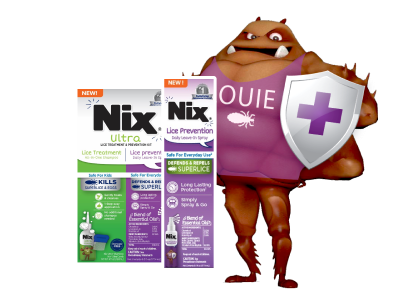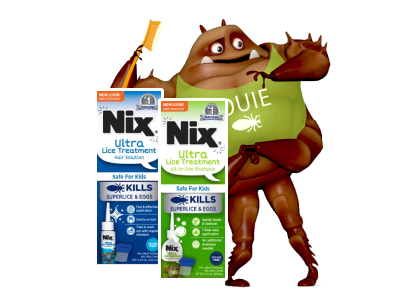
Your Head Lice Checklist: Steps to Take When Your Child Has Lice
Being a parent is never easy. Your kids move from one phase to the next saying goodbye to some challenges and taking on all new ones. When your kids are old enough to begin daycare, school, sports or camps, one unwanted challenge may arise—preventing and treating lice.
We’ve created checklists for you to make it easier for you to prevent, identify, and treat lice and their eggs (nits). You can also check out our Treatment Plan Generator to walk you through steps to take if you received notification of a lice outbreak at camp or school, if you were in contact with someone who had lice, or if anyone in your family is showing signs of a possible lice infestation.
How to Prevent Lice
You don’t want to wait to learn about a lice outbreak to think about prevention. Especially since some schools no longer notify parents about exposures. The best defense is to be prepared so follow these steps to help prevent your family from getting lice.
- Talk to your kids about lice prevention and steps they can take.
- Keep long hair pulled back or in braids close to the head.
- Do not touch heads or get so close to another child that your hair touches.
- Do not share clothing or personal items such as brushes, hairbands, hats, pillows or towels.
- Use lice prevention products like Nix® Lice Prevention Daily Leave-In Spray to help defend against and repel lice and superlice.
For more information, read 7 Tips to Prevent Lice in School, Sports and Summer Camp and 7 Ways to Protect Your Family When One Kid Brings Home Lice.
Signs of Lice
In spite of popular belief, itchiness is not always a sign of lice. It can also be a sign of many skin or scalp conditions. Itchiness tends to show up after lice have been feeding and are biting the scalp. The reaction to the bites causes the itchiness, so it can take time for this symptom to develop. That said, you should still check your child’s scalp and hair if they do seem to be scratching their head, neck or behind their ears. These are signs to look for:
- Itching/Scratching behind the ears or the back of the neck
- Crawling sensation on the head
- Scabs or blood spots on the scalp
- Irritability
- Difficulty sleeping (head lice are most active in the dark)
- Swollen lymph nodes around the neck
- Seeing lice in the hair, crawling on the skin or on clothing
How to Identify Lice
Before you do a head check for lice, you need to know what lice look like in their different life stages.
Adult lice
- Found on the scalp, in or on hair, or crawling
- 6 legs with claws
- The size of a sesame seed
- Grayish-white or tan in color
Nymphs (baby lice)
- Smaller than adults (pinhead size)
- Dull yellow shell
Nits (lice eggs)
- Tiny (size of a knot in thread), oval shaped
- White, yellow or tan in color
- Fixed on hair close to the scalp
- Look like dandruff but cannot be shaken easily from hair
- After hatching, a white or clear shell stays attached to the hair shaft
See images of lice in different lifecycle stages on our What Are Head Lice page.
How to Do a Head Check for Lice
During a lice outbreak in your child’s school or on their sports team, for example, you will want to do head checks every week, or more often if someone close to them has lice. If one of your children comes home with lice, you will want to check everyone else in the family every 2 to 3 days.
If you suspect your child has lice, find a well-lit place for them to sit, preferably in a chair with no upholstery or cushions. Then take the following steps or watch the How to Check for Lice video here
- Bring over a bright floor lamp, flashlight, or lighted magnifying glass, which you’ll need to help find the tiny lice and nits.
- Separate the hair into sections and comb through one section at a time.
- Start at the base of the neck, use the comb to search for lice and nits.
- Check behind the ears too. Lice love warm dark places.
If you do not find lice: Keep an eye on your child’s behavior over the next few days. We also suggest continuing to check your child’s hair to make sure you didn’t miss a louse or egg during your previous search. Use our lice prevention tips in 7 Tips to Prevent Lice in School, Sports and Summer Camp and our Head Lice FAQs.
How to Treat Lice
If you find lice during your head check, we recommend treating with either Nix Ultra Hair Treatment Solution or Nix Ultra All-in-One Shampoo and then recheck after 7 days. If you still find lice or nits after 7 days, apply another round of treatment. When applying any of our prevention or treatment solutions, place a washcloth or small towel over your child’s face to avoid getting any product in the eyes.
Nix Ultra® Lice Treatment Hair Solution
- For use on children ages 2 and older
- Spread Nix Ultra® Hair Solution on dry hair, completely saturating hair and scalp.
- Wait 10 minutes and then thoroughly wash hair using warm water and shampoo (NO conditioner or conditioning shampoo).
- Comb hair with the included Nix® Lice Removal Comb to remove nits and lice
- Wipe lice and nits off the comb after each pass and put the tissue or paper towel into a sealable plastic bag and throw it away. Recheck after 7 days. If you still find lice or nits after 7 days, apply another round of treatment.
For more tips and instructions, go to our How to Treat Lice page or watch How to Use Nix Ultra® Lice Treatment Hair Solution.
Nix Ultra® All-in-One Shampoo
- For use on children ages 12 months and older
- Apply Nix Ultra® shampoo to dry hair and completely saturate the hair and scalp.
- Wait 10 minutes and then thoroughly wash hair using warm water—you do not need to use another shampoo at this time, just rinse with water and do not use conditioner
- Comb hair with the included Nix® Lice Removal Comb to remove nits and lice.
- With each pass, wipe lice and nits off the comb onto tissues or paper towels, put them into a sealable plastic bag, seal and throw away.
- Recheck after 7 days. If you still find lice or nits after 7 days, apply another round of treatment.
For more tips and instructions, go to our How to Treat Lice page or watch How to Use Nix Ultra® All-in-One Shampoo.
How to Get Rid of Lice in Your Home
These tips will help you get rid of lice in your house and also prevent the spread of lice to other family members in your home. For more information, watch our How to Treat Your Home for Lice Video.
- Wash all bedding (sheets, pillowcases, comforters, blankets, etc.), stuffed animals, and clothing that your child used in the past few days. Use very hot water (130°F [54.4°C]), then put them in the hot cycle of the dryer for at least 20 minutes.
- Dry clean any clothing, bedding, or similar personal or household items that cannot be washed in hot water and dried on the high heat cycle.
- Place clothing, stuffed animals, small bed linens, or other items that cannot be washed or dry cleaned in airtight bags for two weeks to kill any lice or nits.
- Spray sofas, sofa pillows and cushions, upholstered chairs, mattresses, carpets and car seats with Nix® Lice Killing Spray
- Direct all family members and anyone who enters your house to follow lice prevention practices.
- Have all family members apply Nix® Lice Prevention Daily Leave-In Spray each day until you are certain the lice are gone from your household
Be sure to read our blog to understand the life cycle of lice as well. Knowing this helps you determine how long to keep up stricter lice prevention practices in the home as well as when it’s safe to stop regular head checks.
Tools & Products for Lice Prevention and Treatment
As a parent you know, the discovery of lice often comes at the most inopportune time. If you keep certain tools, supplies, and lice treatment and prevention products on hand, you never have to worry about being caught off guard.
Here is a list of items that are good to have on hand, especially during sports seasons, back-to-school time, and summer camp.
Lice Prevention Products
- Lice prevention sprays like Nix® Lice Prevention Daily Leave-In Spray
Lice Treatment Tools & Products
- Tissues or paper towels
- Sealable plastic bag
- An old towel
- Disposable gloves
- Hair clips
- Nix Lice Removal Comb
- Light, magnifying glass or phone app
- Timer
- Lice treatment products such as Nix® Ultra Lice Removal Kit
- Lice killing spray (for unwashable items)
Note that, once you know lice have been brought into the home, Nix® Lice Killing Spray can kill lice on unwashable items like furniture and mattresses for up to 4 weeks.
If your child brings home lice and you don’t have treatment products in your home, use our Where to Buy online tool to find Nix products near you.



